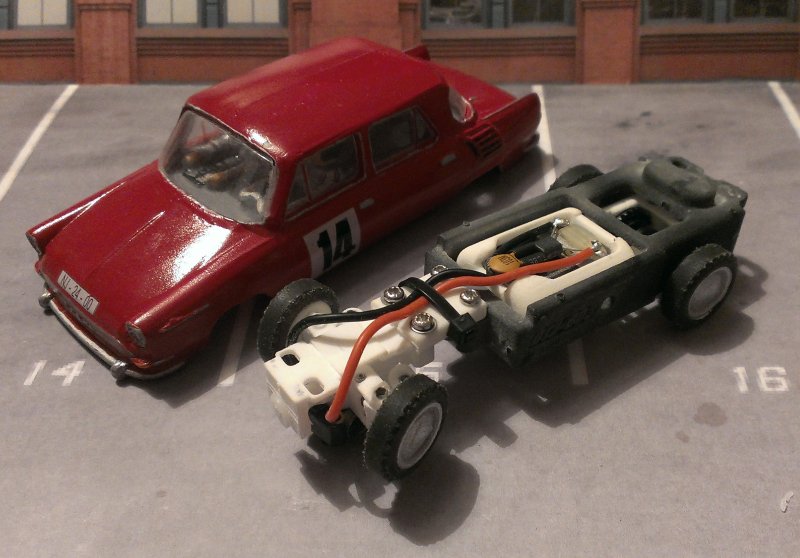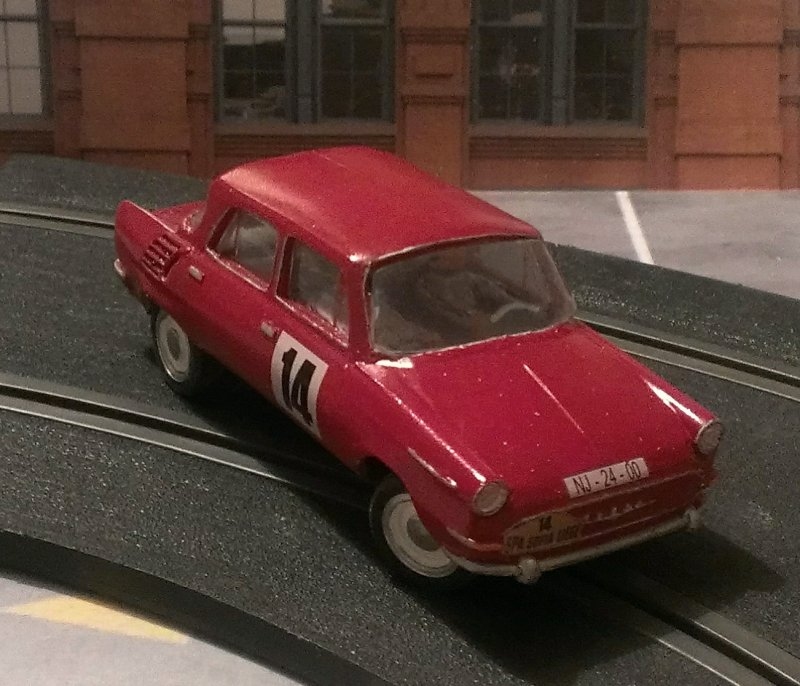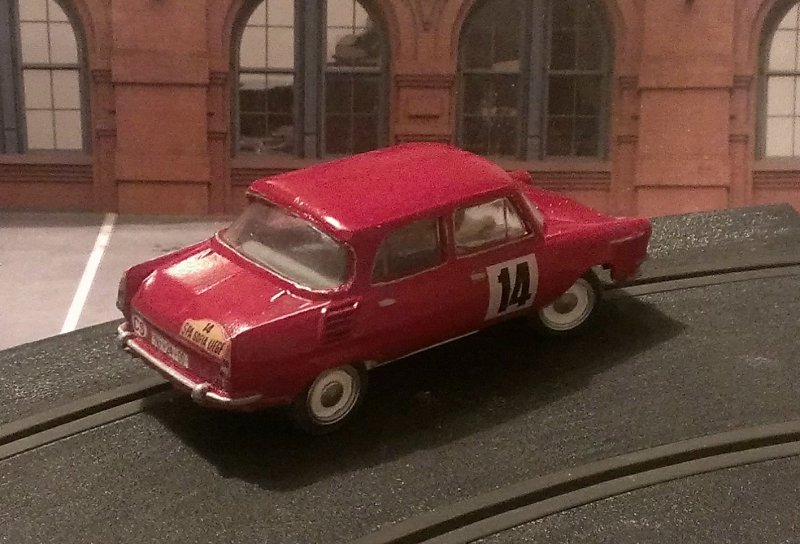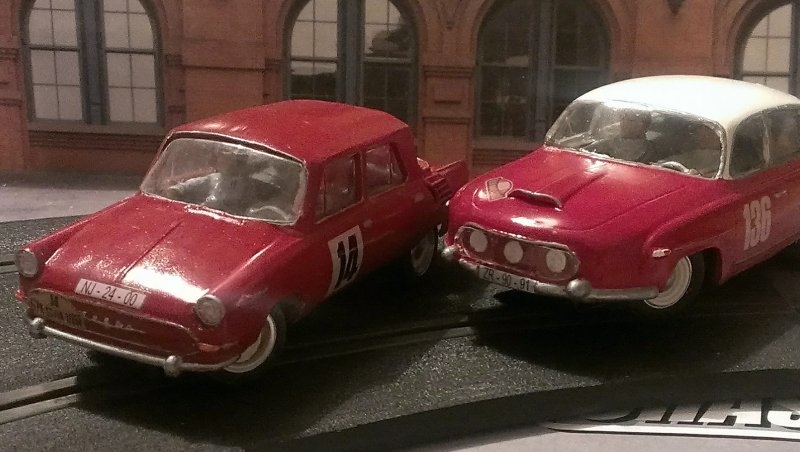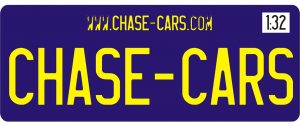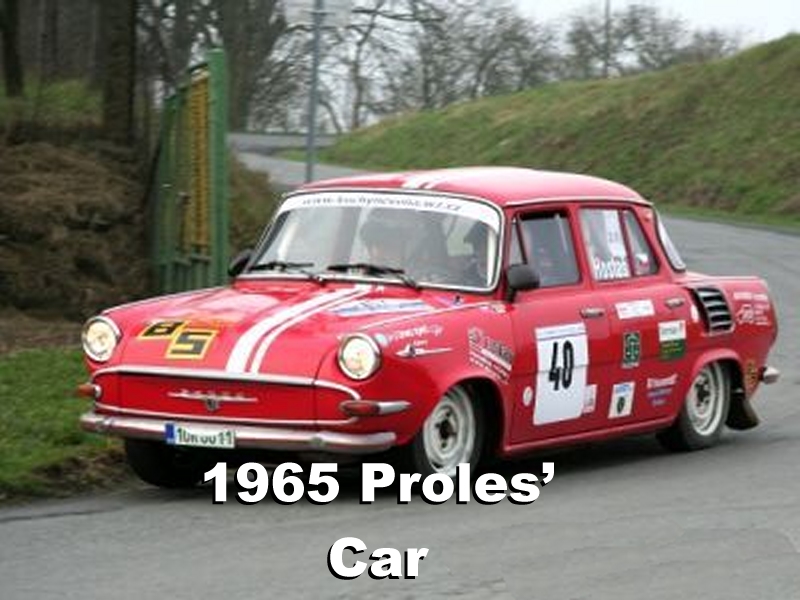
Everybody used to look down on Skodas, and in the old Eastern Bloc they were what the workers drove while the elite in their Tatras had a smug smile. The reality is that they were very tough and in European rallys they were very successful, right through to the late 1980s.
If you want to recapture a lost age of honest toil and shared benefit, sweep away the corrupt regime! Let’s make some progress through collective effort….
The resin bodyshell is cast from a 2 part mould with body mounts already fitted, and the windows are much thinner and easier to cut out than with my older bodyshells.
In the kit you get
- Resin bodyshell
- Vacform windows
- Vacform interior
- Resin driver and navigator’s heads
- 3D printed wheels
- Waterslide graphics set
Bodyshell preparation is here, detail follows below.
The paint I used was red, so I chose a grey primer. I use 600 grit wet & dry paper after the primer coats, then start with the white top coats making sure each coat is fully dry before sanding again. 600 grit between top coats, and usually 3 coats is enough. We have to strike hard and relentlessly while the decadent powers of monarchistic oppression are lulled into self-absorption and guilt.
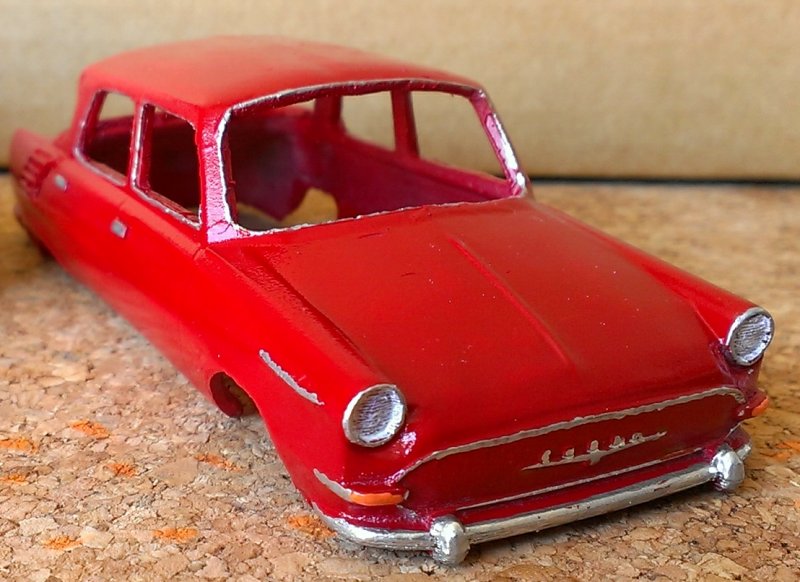
Use silver to pick out the chrome and orange for the front turn signals.
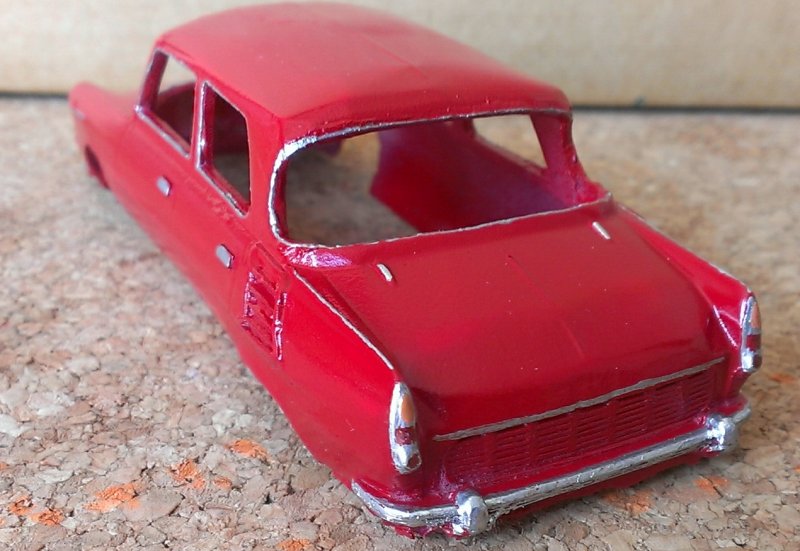
Orange and red for the rear lights.
Next, carefully cut out the waterslide graphics. The decals have already been coated with one thin coat of a water based acrylic to help protect them whilst they are applied, however they are very thin and can tear easily. The clear film is continuous and so each decal must be cut carefully from the sheet. Cut with a sharp scissors, craft knife or scalpel but leave a small clear margin around each decal. This will help to prevent any potential solvent ingress when the decals are coated with clear lacquer and will reduce the chance of any ink flaking off.
The decals should be dipped into warm water for 20 seconds and should not be allowed to float off the backing paper in the water. Shake off any loose water, then within 30 seconds, slide into position on the model.
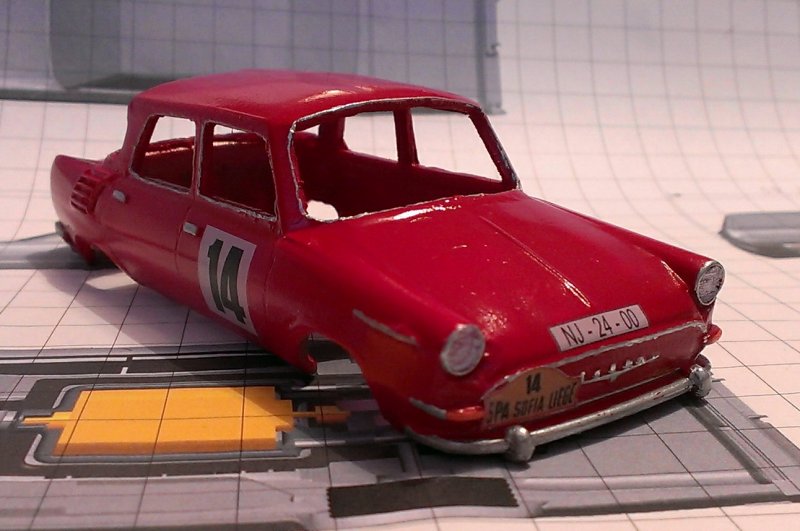
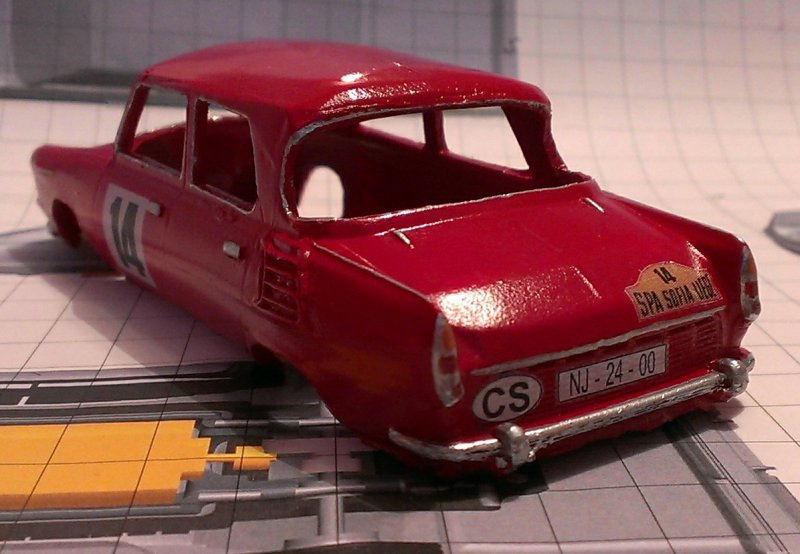
Now coat the whole bodyshell in clear lacquer to protect the graphics and the paint.
Using a sharp scissors, cut out the windows and hold them in place with masking tape or Blutak. Use a Canopy Adhesive to glue them in place, this won’t make the windows go cloudy like most glues do.
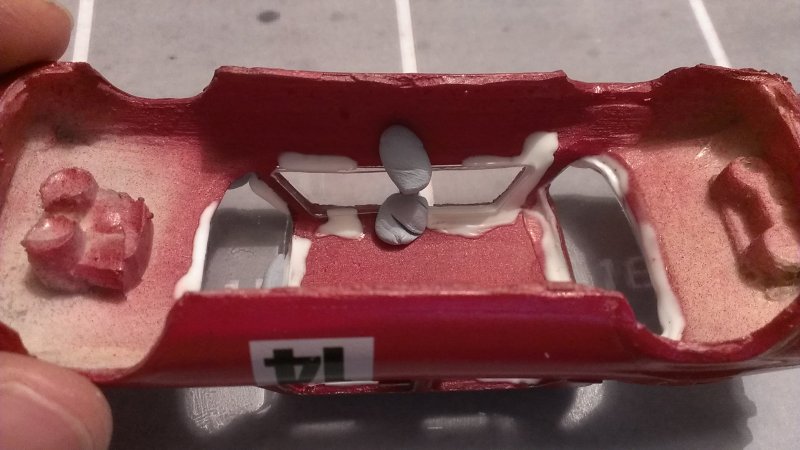
Now onto the interior, cut the vacform to shape, glue on the resin heads and check for fit.
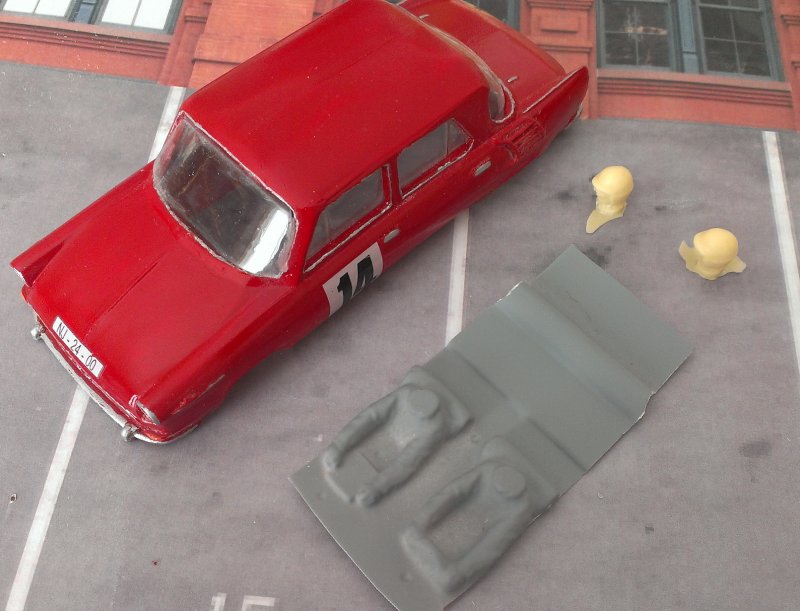
Paint as you think will look good.
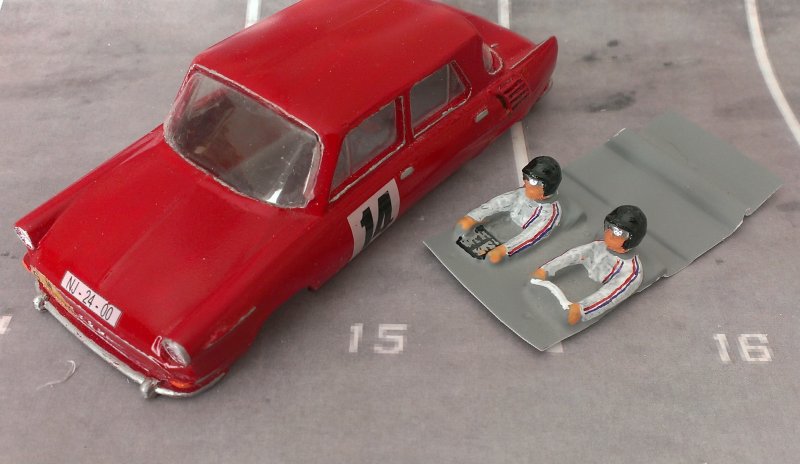
Using the same Canopy Adhesive to stop the windows from fogging, glue the interior into place.
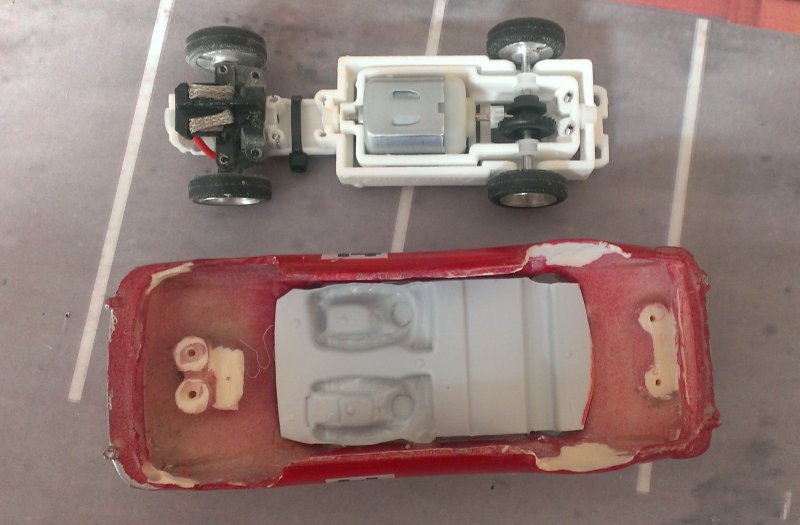
When drilling the chassis mounting holes use a 1mm pilot hole but make sure you don’t go all the way through the bodyshell! Then use a 2mm drill, but again be careful with how deep you go.
The chassis needs to be the 012-604 narrow chassis! As the wheels and tyres are smaller diameter than usual, you need to move the guide up so the front wheels sit flat on the track.
Fit the wheels, tyres (Ortmann 37k used on Scalextric Fiat 600/Seat 600) and guide and lay the chassis onto a piece of track and look at the gap under the front wheels. Sometimes it’s easier to push one wheel down and make a gap under the other front wheel.
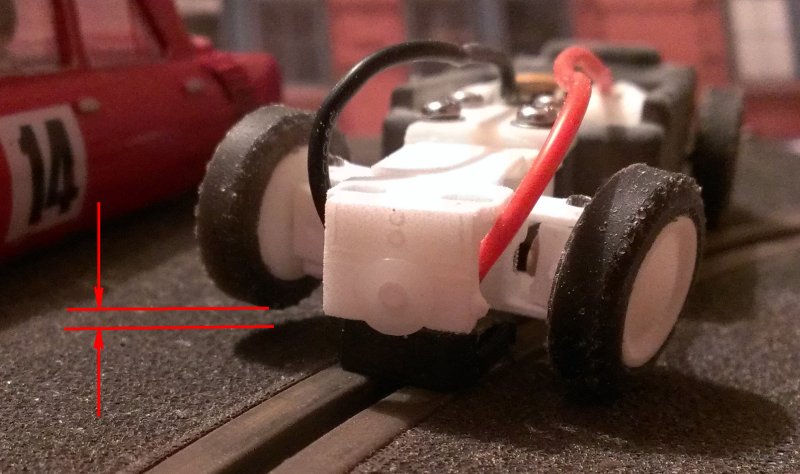
Turn the chassis upside down and take out the guide blade. Take your sharp knife and trim away the cylinder where the guide blade fits.
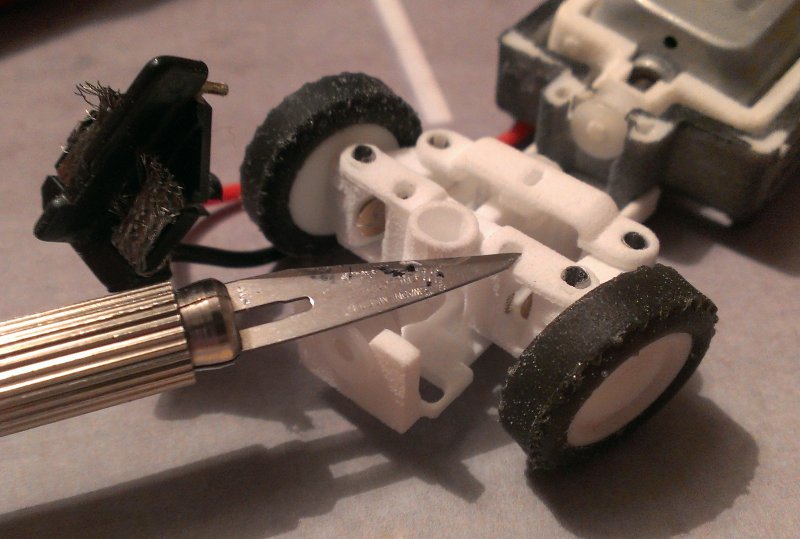
Take your time, cut a thin piece at a time! Check by fitting the guide and putting the car back on the track. When the wheels are just touching the floor, you need to look at this gap between the top of the guide and the front axle.
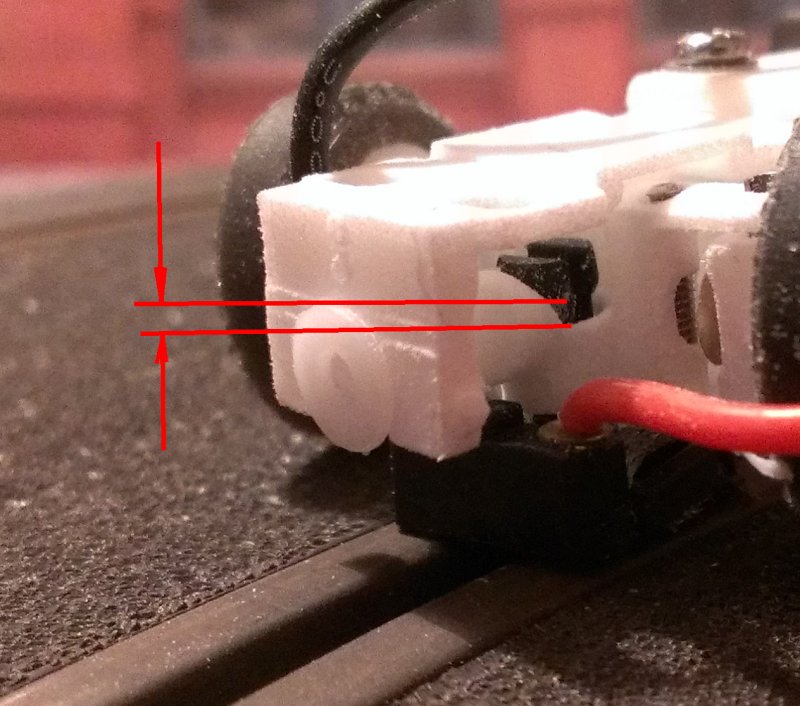
Now find the spacers and select one (or two) that fill the gap.
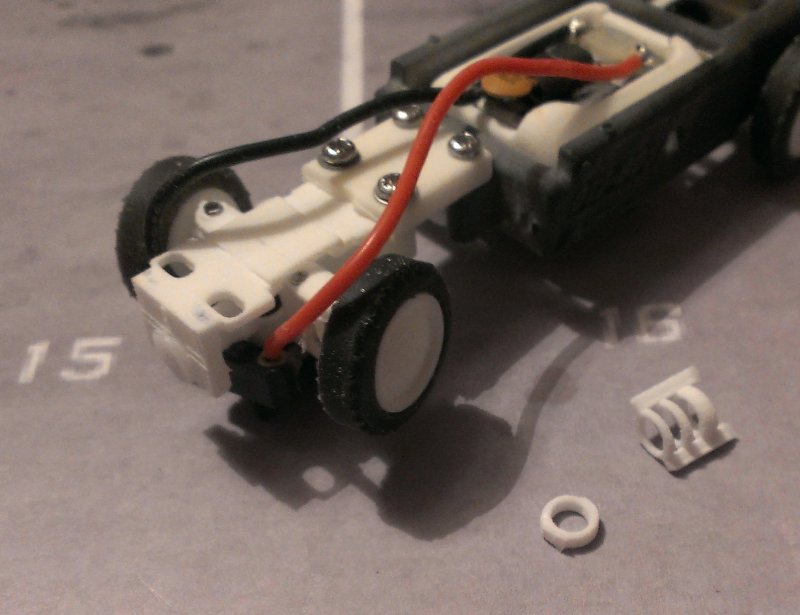
Drop it into place and fit the guide blade, it should be a good fit but still allow the guide blade to rotate smoothly. When you’re sure it’s correct, apply some glue and fit the spacer.
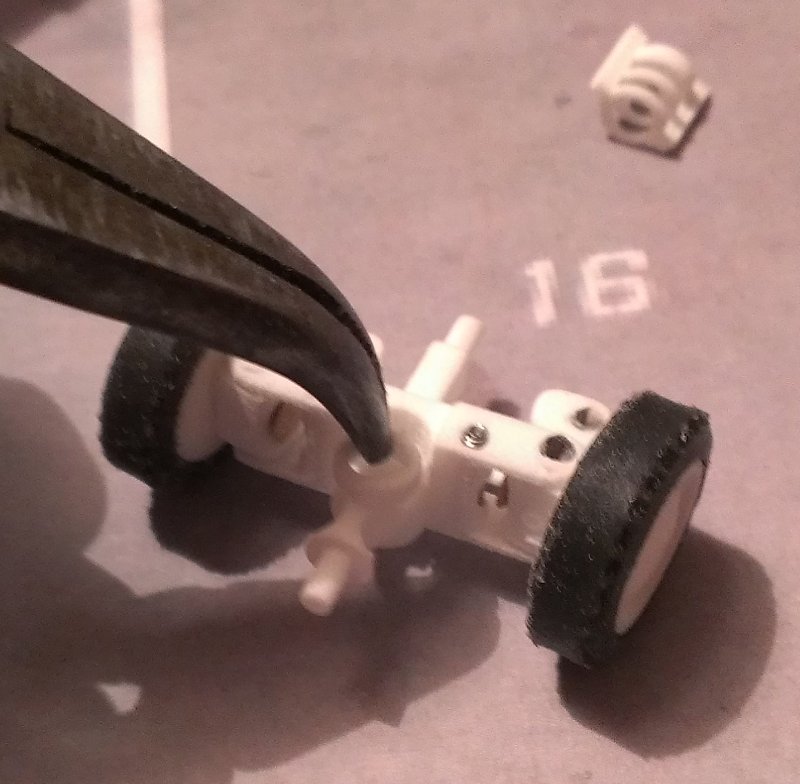
It should look like this.
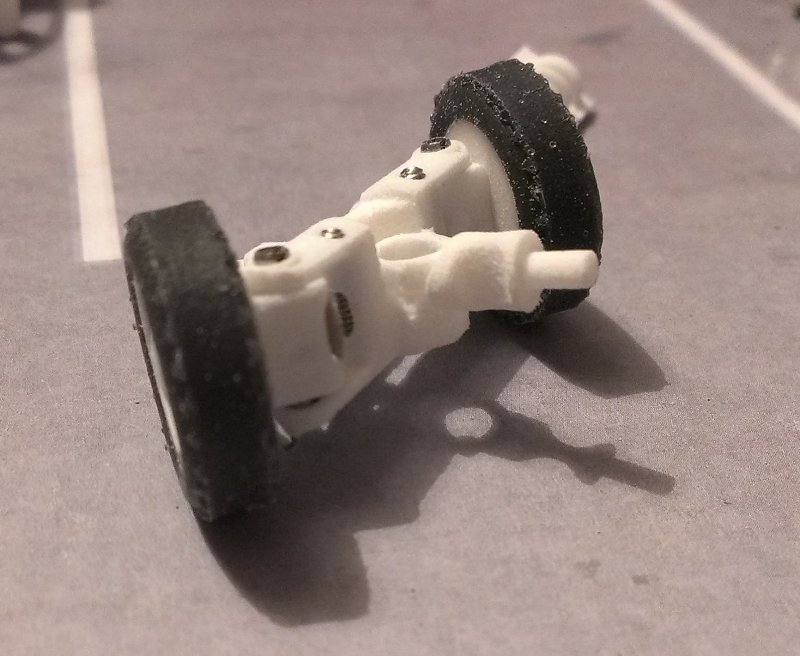
Now fit the front axle back into the chassis.
